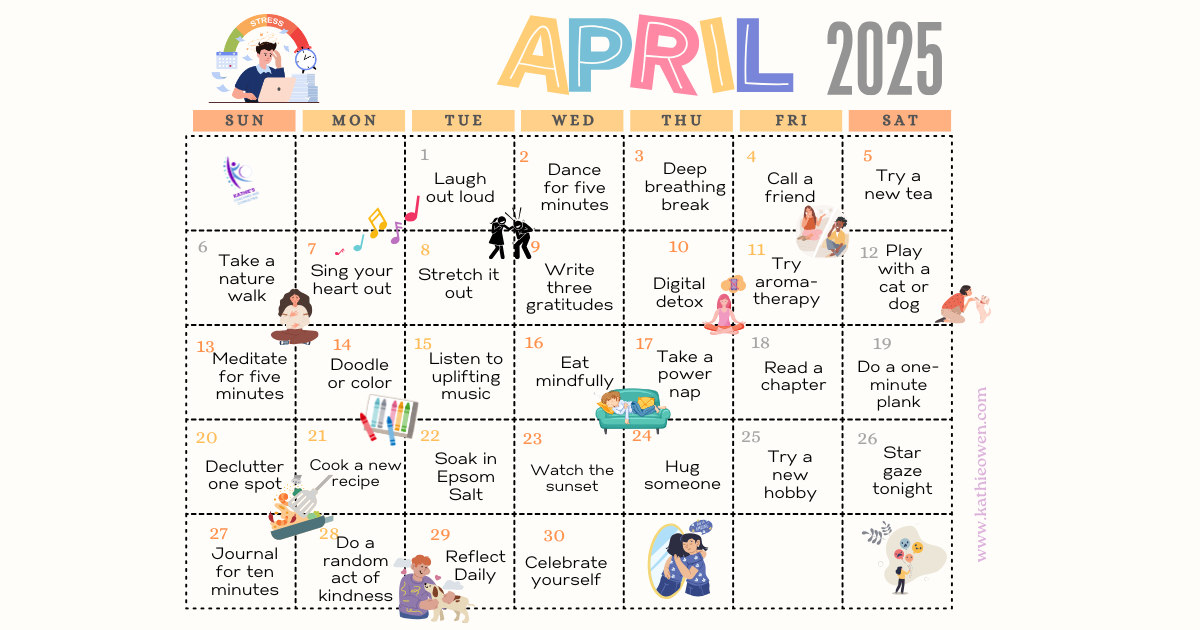Storytelling as a Leadership Tool: Inspiring Your Team
In the realm of leadership, the ability to effectively communicate, motivate, and guide a team is paramount. Among the myriad tools and techniques at a leader's disposal, storytelling emerges as a particularly powerful instrument.
It transcends the mere conveyance of information, tapping into the emotional reservoirs of listeners, and fostering a profound sense of connection and purpose.
This blog post delves into the nuances of storytelling as a leadership tool, offering insights into how leaders can harness this art to inspire, motivate, and guide their teams towards achieving collective goals.
The Essence of Leadership Storytelling
At its core, leadership storytelling is about more than recounting events; it's about sharing experiences in a way that resonates with the audience, allowing them to see themselves within the narrative and drawing lessons applicable to their own lives and work. It's about using narrative to embody the values, vision, and ethos of the organization, making these abstract concepts tangible and relatable.
Why Storytelling Works
Humans are wired for stories. Our brains are more engaged by stories than by facts alone because stories activate emotional responses, and emotions are a key driver of memory and decision-making. By sharing stories, leaders can make complex concepts accessible, share knowledge and wisdom, and most importantly, inspire action.
Components of Effective Leadership Stories
Authenticity: The best leadership stories are rooted in genuine experiences. Authenticity breeds trust and credibility, which are essential for effective leadership.
Relevance: A story's power lies in its relevance to the audience. Leaders should tailor their stories to their team's context, challenges, and aspirations.
Simplicity: Complexity can dilute a story's impact. Effective leadership stories are simple and focused, making them easy to remember and retell.
Emotional Connection: Stories that evoke emotion are more likely to inspire and motivate. Leaders should not shy away from showing vulnerability or sharing personal challenges and triumphs.
Clear Takeaway: Every story should have a clear point or lesson that aligns with the team's goals or values, providing actionable insights.
Harnessing Storytelling to Inspire
Inspiration is the fuel that drives innovation, commitment, and perseverance. Leaders can use storytelling to paint a compelling picture of the future, illustrating what is possible when the team unites behind a common goal. By sharing narratives of past successes, challenges overcome, or the transformative journey of other teams or organizations, leaders can ignite a spark of inspiration, encouraging their team to strive for excellence.
Using Narratives to Motivate
Motivation is deeply personal, and what motivates one team member may not resonate with another. This is where the power of diverse storytelling comes in. By sharing a variety of stories that highlight different aspects of the human experience—resilience in the face of adversity, creativity in problem-solving, or the joy of collaborative success—leaders can connect with the diverse motivations within their team, encouraging each member to bring their best selves to the table.
Guiding Through Storytelling
Guidance is a fundamental aspect of leadership, but directives can often feel impersonal or disconnected from the day-to-day realities of team members. Through storytelling, leaders can provide guidance in a more nuanced and empathetic way. By sharing stories of how challenges were navigated, decisions were made, or ethical dilemmas were resolved, leaders can offer guidance that feels more accessible and relatable, empowering team members to navigate their own challenges more effectively.
Examples from Renowned Leaders
History is replete with leaders who have masterfully used storytelling to inspire, motivate, and guide. Martin Luther King Jr.'s "I Have a Dream" speech is a prime example of how visionary storytelling can galvanize a movement. Steve Jobs, co-founder of Apple, used storytelling to launch revolutionary products, turning tech launches into narratives about changing the world. Closer to the corporate realm, leaders like Indra Nooyi, former CEO of PepsiCo, have used personal stories to connect with employees and share valuable leadership lessons.
Implementing Storytelling in Leadership Practice
Incorporating storytelling into leadership practice doesn't require a radical overhaul of communication styles. It can start with small steps:
Reflect on Personal Experiences: Consider your own professional journey, the challenges faced, lessons learned, and moments of triumph. These personal stories can be powerful tools for connection.
Listen Actively: Great stories often come from within the team. Actively listen to the experiences of team members, and encourage the sharing of stories in meetings and informal gatherings.
Study Master Storytellers: Analyze speeches and presentations of renowned leaders and storytellers. Note how they structure their narratives, engage their audience, and convey their message.
Practice: Like any skill, storytelling improves with practice. Seek feedback from trusted colleagues or mentors, and be open to refining your approach based on their insights.
Watch our episode on YouTube: https://youtu.be/ZkMYKKhGKcU
Listen to the episode on Kathie’s Coaching Podcast
Conclusion
Storytelling is an art, and when wielded by a skilled leader, it can be a powerful force for inspiring, motivating, and guiding a team. By embracing the principles of authenticity, relevance, simplicity, emotional connection, and clarity, leaders can transform their communication, deepen their connection with their team, and drive their organization towards shared success. In the words of author and leadership expert Simon Sinek, "Stories are attempts to share our values and beliefs. Storytelling is worthwhile when it tells what we stand for, not what we do." Embrace storytelling as a leadership tool, and watch as the narratives you share today shape the successes of tomorrow.
Bonus Resources:
Kathie Owen, Corporate Wellness Professional
Read More Articles Here
Transcript
That is what happens when you tell a story. Everybody starts to feel the effects going on inside that story.
I start hearing this smoke detector going off and it wasn't inside the house. It was in the attic. Who puts a smoke detector inside the attic?
Humans are wired for story. Our brains are wired for story. We're more engaged when we're listening to stories because they evoke emotional responses.
That story needs to be relevant to what's going on inside the culture, inside the company, inside decisions that are being made.
When you can insert humor inside that story and get the emotion to shift just a tad and then go back to the serious, just a tad and go back to the serious.
By sharing stories. Leaders can make key concepts accessible. And most importantly, they inspire action.
You're listening to Kathie's coaching podcast. I'm your host, Kathie Owen.
When you tell a story, there is transformative power inside that story that can affect your leadership, your skills, how people perceive you, what's going on inside this story.
So the lunch and learns that I help navigate through companies have had a profound impact on the team. And there's one reason why. And it's storytelling. For what happens in these lunch and learns as we invite one executive member to meet with 10 to 12 other team members all throughout the business.
And this incorporates storytelling because we're sitting down. We're having lunch and it comes organically. It comes naturally. That is powerful. So what happens in these lunch and learns is the executive team members starts talking first when they start talking, they. Organically tell a story because they'll start talking about where they got their start in the company.
What happened? Things that they encountered. Problems that they met. And when you hear these from the mouth of your leader is shifts everybody's perspective. They start to understand where that person is coming from. Maybe why they're mad when they're having this bad look on their face. Maybe they understand why they came from where they came from.
And most importantly, it creates effective communication. Because they see, oh, this person is just like me. They went through this. That is what happens when you tell a story. Everybody starts to feel the effects going on inside that story.
I lived in this house. For about six years and all of a sudden, I start hearing this smoke detector going off and it wasn't inside the house. It was in the attic. Who puts a smoke detector inside the attic, because what happened was I had to go up into the attic and change that battery. But there's something you got to know about me. I am scared of Heights.
I'm scared of ladders. But I faced my fear. That's a small, minimal fear, so I faced it, but I also knew myself. I made sure that my boys were at my house at the time of changing out this battery. So I go up into the attic and change the battery out. And. Pull it down and then I drop the battery. That I was going to replace in the installation.
So I walked back in there.
Everything was okay, but I was walking on one of those boards and I fell. Through the attic onto my desk, inside my office. When I did that, I felt through the installation, I fell through the ceiling. And there was all kinds of damage, but I will say this. There was no damage to my body. I did not break anything.
I did not traumatically hurt anything. And I believe that was due to my fitness. Because of the way that I train and the way that I teach other people to work out, I train my muscles in ways that they can adapt to a fall, to a slip, to a minor. Fall. I mean, maybe if I fell all the way to the floor, it would have been different.
But the funny thing was. My son happened to just be there and sit there. I mean, he remembers this to this day. And he talks about this too. So my pride was kind of embarrassed. So why do I tell you that story? That story right there is very. Affective and communicating why I train the way I do, because it helps prevent injury.
It helps prevent others from getting hurt and why I will train the calf muscle in this angle and that angle and this angle. And. It helps people to understand that perspective. It also puts some vulnerability inside this story. And that is what we're talking about when it comes to leadership being vulnerable and actually explaining to your team. That you are. Human.
I was once at this lunch. Um, that was the entire company. And the leader of the company was talking about numbers. Statistics. And what was going on inside the company, as he would talk to the board members. But the thing was he forgot who his audience was. We were just team members. We were just part of this activity that was going on and it was a fun event. But the people in the audience kept talking, they kept talking and talking and talking, despite other people telling them to be quiet.
It was like kindergarten, wait a second. We're adults here. Why were people doing this? They were doing that because they were not involved in the story. The story makes a difference.
This point right here is why storytelling works. Humans are wired for story. Our brains are wired for story. We're more engaged when we're listening to stories because they evoke emotional responses.
Emotions are a key driver in decision-making and memories. And these things come into play when you're telling a story.
By sharing stories. Leaders can make key concepts accessible. They could share their knowledge and wisdom and it comes organically. And most importantly, they inspire action.
Here's some key components for effective. Leadership stories.
Authenticity is number one. Authenticity is a buzz word. I know I get it. But what happens when you tell a story organically, and just on the spot, you tell a story about an experience that you had that relates to what's going on inside the company. It brings out authenticity. That's the power of an organic story. Like we do an, a lunch and learn because. What happens is they talk about their struggles that they went through during the pandemic, why we had supply chain issues or why we were successful during the pandemic because of this, this, and this, and that story captures the attention because we're going, oh, I understand.
Now I see why that happened. I understand why that happened. I understand why he's doing and making the decisions that they're making. It is so authentic.
Number two is relevance. That story needs to be relevant to what's going on inside the culture, inside the company, inside decisions that are being made.
For example, that story that I told you about how we were at this luncheon and they were telling. Numbers, they were spouting off statistics. They were talking about why this department did this and nobody was interested because it wasn't relevant to the event. We were at a luncheon. This was a celebration luncheon and yes. The team leaders wanted to let us know what was going inside the company, but it wasn't relevant to the experience.
However, you could shift that and you could talk about something that you went through during this time period during this past year, during the event that you're trying to display the numbers too. And when you bring that story in you've captivated, your audience you've caught their attention. And made a difference.
Number three simplicity. Keep it simple. Keep it short and simple. When I was in Toastmasters, they have a time limit on their speeches. It's eight minutes, because what can happen is you can get caught up in details. In fact, just recording this video and I'll have clips at the end of where I messed up, because I started going off on a tangent start talking about this, started talking about this. You don't need to know that.
And a lot of video ends up on the cutting room floor, or I'll put it at the end of my videos, just for entertainment purposes, to poke fun at myself, to have a good time to keep you interested, but keep it simple. That keep it simple, silly. Acronym. K I S S yes. Keep it simple.
Number four emotional connection. And you already understand where I'm going with that because I created an emotional connection with you. When I told you my story about falling through the attic, I made fun of myself. I poked fun of myself. Humor adds that emotional connection as well, especially when you're telling a story that's really serious or talking about something that's really serious. When you can insert humor inside that story and get the emotion to shift just a tad and then go back to the serious, just a tad and go back to the serious.
That's why standup comedians are good to watch on how they tell stories. But when you poke fun at yourself, you're expressing vulnerability. That brings the other people into the story, especially as a CEO, especially as a president of a company, because that shows us, Hey, this person is human.
Just like me. They're approachable. And if you have an open door policy inside your company, you need to be vulnerable. You need to be able to understand that these people are human. I am human. You need to express that. And when you tell a story and use vulnerability, you express that.
Number five clear takeaway. Every story should have a clear takeaway from it that applies to what's relevant. What is important, what we're talking about here. So will you want to be able to give a clear takeaway and my example of me falling through the garage? I tell that story. When I'm talking about fitness, when I'm talking about how to prevent yourself from getting hurt. And. When you work out and you lift weights, what's going to happen is you're not going to.
Hurt yourself as badly as you could have.
I could have broken my arm. I had this gash on my arm. I could have broken my arm. I could have broken my leg. When I fell down or hurt my tailbone, I didn't do any of those because of the way my muscles are trained. And that was the clear takeaway in that story.
So, what are the components of effective storytelling? It's authenticity. Relevance. Simplicity. Creative emotional connection. And be sure to give a clear takeaway.
Harnessing storytelling to inspire. Inspiration is the fuel. That drives innovation. Commitment. And perseverance.
Leaders can use stories to create a compelling future.
To illustrate what's possible when the team unites together. By sharing a common goal. By sharing narratives about the past. The past successes. Challenges to overcome. Or transformative journeys of other teams and organizations.
Leaders can ignite a spark of inspiration. And encourage their team to strive for excellence.
To inspire motivation is also a great tool in your storytelling. Toolbox motivation is a funny thing. And it doesn't just come because you tell a story. People aren't going to be motivated to work out because of my story that I talk about falling through the attic that is not going to motivate them to work out.
But my bottom line of that story, that's going to motivate them to work out. They're going to go, oh, but they're going to relate. I stepped off that curb wrong. That messed up my ankle. And I need to start training my calves so that they work in all these different angles. So when I do step off the curb, it's not gonna be a broken Akilis.
It's not gonna be a broken ankle. It's just going to be a pull of ligaments, a pull of tendons, which only takes two to three weeks to heal maybe a little bit longer as opposed to an Achilles, which means you're totally off your leg for several months.
We have a newsletter on Mondays that provides motivation for the week. If you'd like to sign up for that, be sure to check the links in the description below.
And I hope to see you there
So you can guide your team through storytelling as a leader, you're trying to inspire your team.
You're trying to motivate your team. But how do you guide them to understand? Sometimes the statistics can be impersonal. Sometimes the story or the point that you're trying to make can seem like, oh, that doesn't apply to me. I'm just doing this. But when you tell a story and you bring it in, in another perspective, it shifts everything and then it applies to everybody conveniently.
So, and then your providing guidance in a more nuanced. And empathetic way.
Steve jobs was known for telling stories. And in fact, he was the person that stepped into the break room and I'm gonna botch this story up, but he came into the break room and he asked, " who is the most powerful person in business.?" And they spouted off answers. And he said, no. The most powerful person in business is the storyteller. And he's exactly right. He's exactly right.
Because storyteller brings in all of these emotional components and the way the brain works and affects the people in a different way. Steve jobs turned tech launches into narratives that people could change the world.
So how does one implement storytelling in leadership positions? Reflect on your personal experiences, pull from personal experiences to share stories. As a team leader, you could share a story about how you struggled with this little incident here that somebody's struggling with now, because as you evolve, it's always a journey, not a destination, but as you evolve, you can look back on the journey and see where you had personal experiences, where you struggled and you overcame. That is a powerful story.
During these lunch and learns, we have what is called active listening. And these team members don't even realize it's going on because as we go around the table, each person introduces themselves. They talk about how they came through the company, what they did in the company. And when they're doing that, we're all actively listening. We're all putting ourselves in that position of that person and thinking. Huh I did that.
I did that. I can see myself in that story. I don't see myself in that story. But it builds active listening because you're sitting there out of respect. Listening to this person, listening is a very powerful tool. God gave us two ears and one mouth for a reason.
Study master storytellers. When it comes to leadership. One of my favorite persons to listen to is Simon Sineck. I love his book Leaders Eat Last and also Start With Why I will have links to both of those books in the show notes and description below. But what Simon does is he tell stories that bring in a different component that help you understand the narrative that help you see how leaders. Are formed.
And it's got stories all throughout that. So I study his Ted talk. His Ted talk is one of the most watched Ted talks of all time. And he does it so profoundly. Interestingly, one of the things you see starts out any talks about what he does as a, um, inspiring people to be better leaders.
He goes really, and truly, I shouldn't have a job, any. And he admits, he goes, I'm embarrassed to say I have a job. Yeah. That is the power of using story to talk about different things. He captures your attention right away, and he starts his speech with that. I'll have a link to that in the show notes and description below as well.
And then practice, like any skill it's going to take practice and practice and practice and practice.
I can't tell you how many times. I look back at my videos while I'm editing them and think I could've done that better. I could've done that better. I could've done that better. And it just takes practice to get better and better and better. And I will probably look back on this and think, oh, I could've done that better. But that's just practice. I count this up to practice and just go from there.
So storytelling. Is an art. When it comes to leadership, you can motivate, inspire your team. Create change in the team and it could be a powerful force for motivation. And guiding a team. Embrace the principles of authenticity simplicity. Relevance emotional connection. And clarity. As a leader, you'll transform your communication. Deepen your connection with the team. And drive your organization to shared success.
In the words of author and leadership expert Simon Sineck. " Stories or attempts to share our values and beliefs. Storytelling is worthwhile when it tells what we stand for, not what we do."
I invite you to embrace storytelling as a leader. And watch the narratives you share today shaped tomorrow. All right. That's my episode for today. I trust that you found it helpful. If you know somebody who could benefit from it, please share it with them. And until next time I will see you next time, peace out and Namaste. Bing.

























A leadership coach shares her personal journey of being fired for speaking up against toxic workplace culture, drawing parallels with Ted Lasso's themes of authentic leadership and courage. Her story illustrates how challenging systemic dysfunction often comes at a cost—but leads to greater freedom. #WorkplaceCulture #Leadership #TedLasso #ToxicWorkplace #CareerGrowth